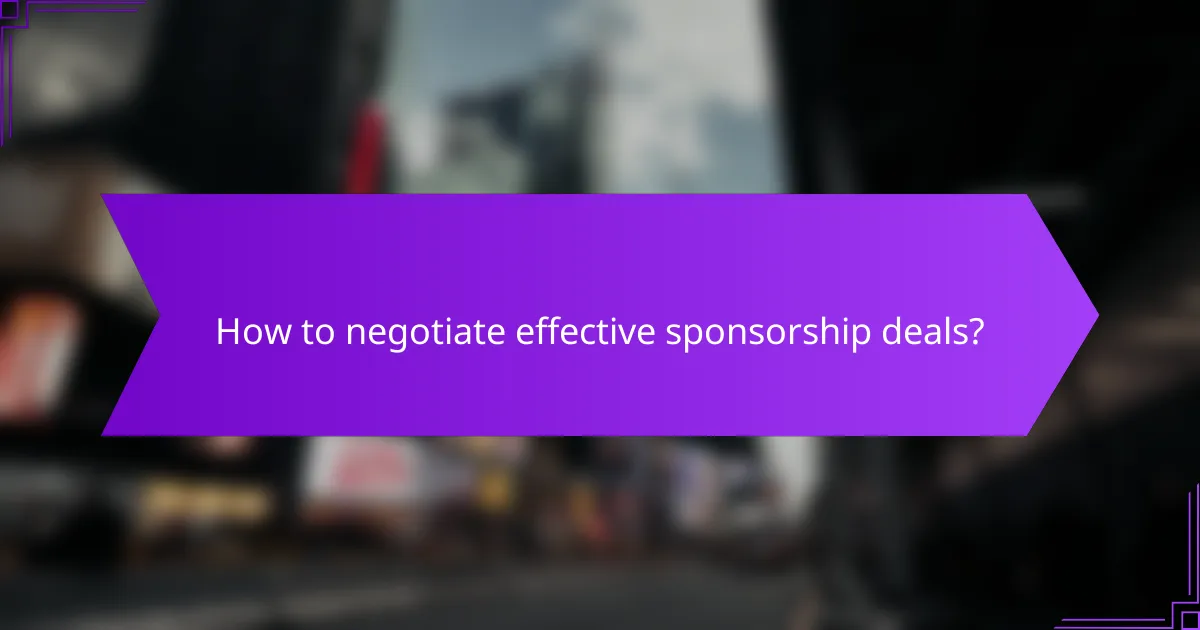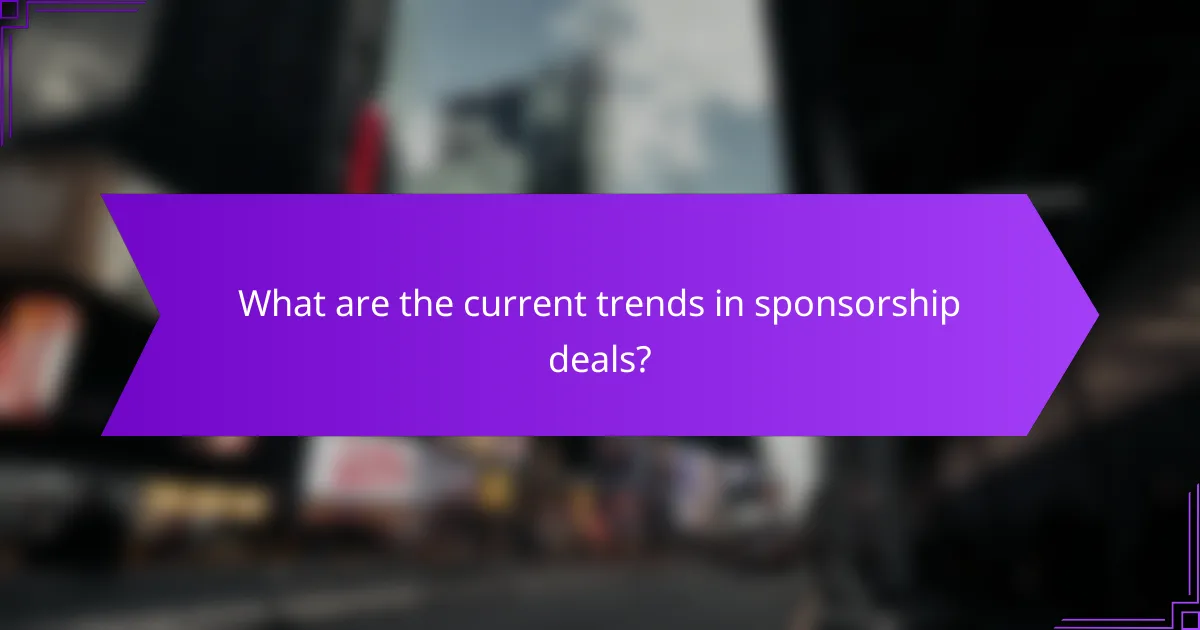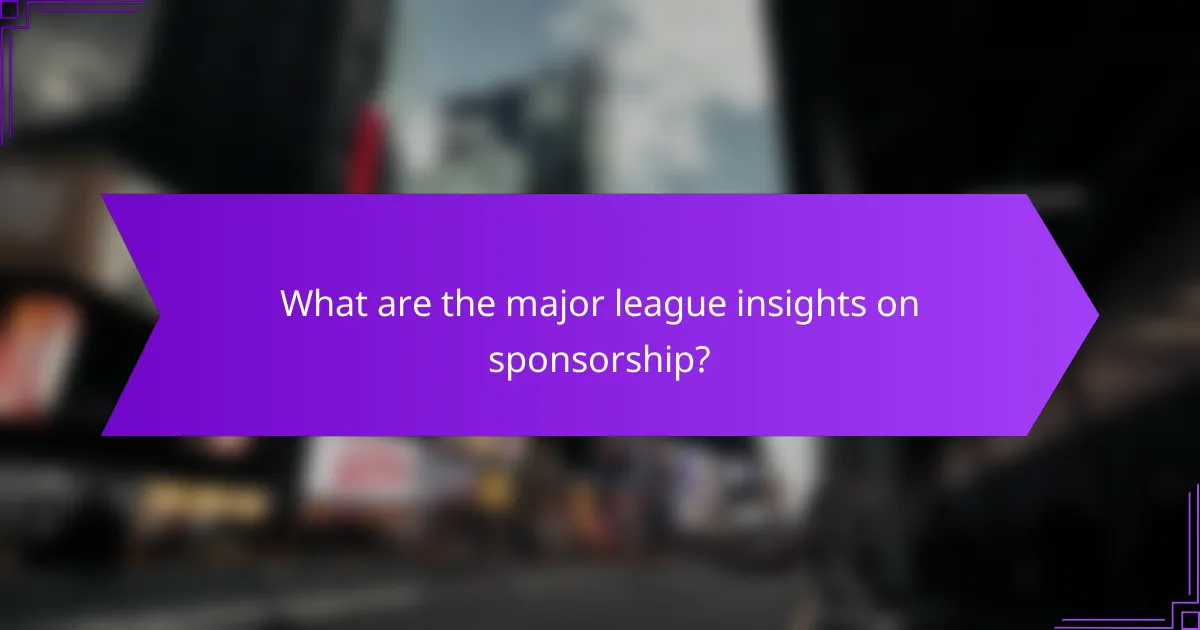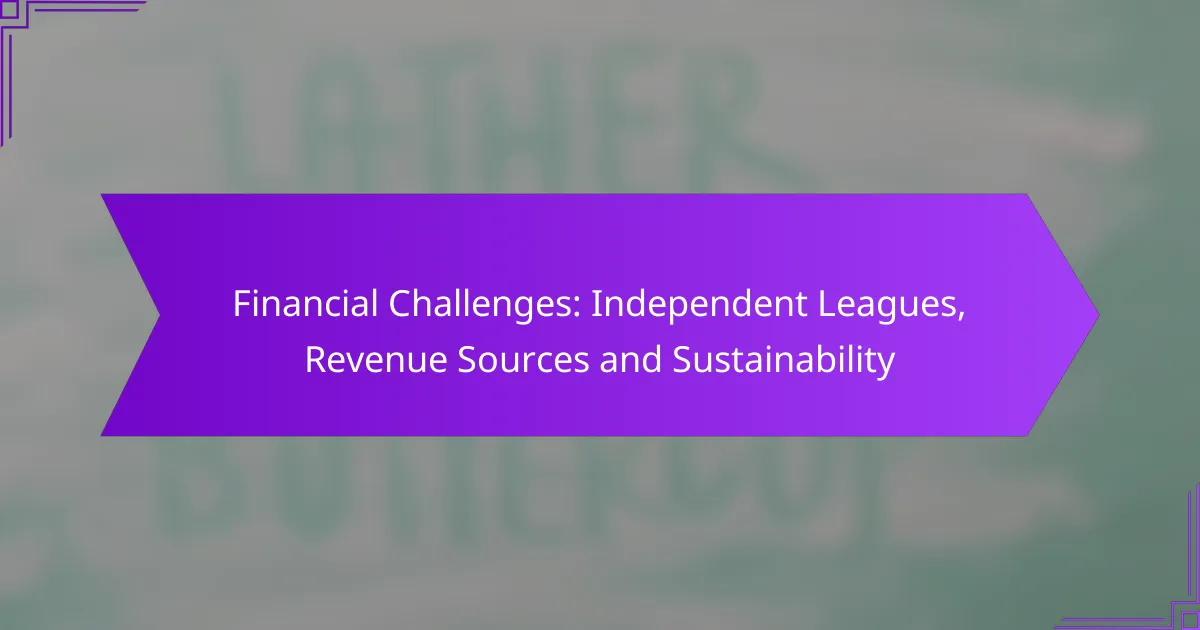Sponsorship deals in sports offer brands a unique opportunity to enhance visibility and engage with targeted audiences, ultimately driving sales and fostering community connections. Effective negotiation is crucial, as it requires aligning the interests of both parties to create mutually beneficial agreements. As trends evolve, brands are increasingly focusing on digital engagement, sustainability, and data-driven strategies to connect with consumers in innovative ways.

What are the key benefits of sponsorship deals in sports?
Sponsorship deals in sports provide significant advantages for brands, including increased visibility, enhanced customer engagement, and access to specific target audiences. These benefits can lead to improved sales and stronger community ties, making sponsorship a strategic investment for businesses.
Increased brand visibility
Sponsorship deals significantly boost brand visibility by placing logos and advertisements in front of large audiences during games, events, and broadcasts. This exposure can lead to heightened brand recognition, especially when associated with popular teams or athletes.
For example, a company sponsoring a major league team can expect its brand to be seen by millions of viewers, both in-person and through various media channels. This visibility can translate into a broader market presence and increased consumer awareness.
Enhanced customer engagement
Engaging with customers through sponsorships allows brands to create memorable experiences that resonate with fans. This can include exclusive promotions, interactive events, or social media campaigns tied to the sponsored team or event.
Brands can foster loyalty by providing fans with unique opportunities, such as meet-and-greets with players or behind-the-scenes access. These experiences can deepen emotional connections and encourage ongoing customer interaction.
Access to targeted demographics
Sponsorship deals enable brands to reach specific demographics that align with their target market. By associating with particular sports or teams, companies can effectively engage with fans who share similar interests and values.
For instance, a brand targeting young adults may choose to sponsor a popular soccer league known for its youth following. This strategic alignment can enhance marketing efforts and improve conversion rates among the desired audience.
Boosted sales and revenue
Effective sponsorship deals can lead to increased sales and revenue by driving brand awareness and customer loyalty. When fans feel a connection to a brand through sponsorship, they are more likely to make purchases or recommend the brand to others.
Brands often experience a measurable uptick in sales following high-profile sponsorships, especially during key events like championships or tournaments. Tracking sales data before and after sponsorship activation can provide insights into the return on investment.
Strengthened community relations
Sponsorship deals can enhance a brand’s reputation within the community by demonstrating commitment to local sports and initiatives. Supporting local teams or events fosters goodwill and can position the brand as a community leader.
Participating in community events or sponsoring youth sports leagues can create positive associations and strengthen ties with local consumers. This approach not only boosts brand image but also encourages community support and loyalty.

How to negotiate effective sponsorship deals?
Negotiating effective sponsorship deals involves understanding both parties’ needs and finding common ground. A successful negotiation can lead to mutually beneficial agreements that enhance brand visibility and support financial goals.
Research potential sponsors
Identifying the right sponsors is crucial for successful negotiations. Look for companies that align with your brand values and target audience. Research their past sponsorships, marketing strategies, and financial capabilities to gauge their potential interest and fit.
Utilize tools like social media analytics and industry reports to gather insights about potential sponsors. This information will help you tailor your pitch and demonstrate how a partnership can benefit them.
Define clear objectives
Establishing clear objectives is essential before entering negotiations. Determine what you want to achieve from the sponsorship, such as increased brand awareness, sales growth, or community engagement. Having specific goals will guide your discussions and help you measure success later.
Consider both short-term and long-term objectives. For example, you might aim for immediate financial support while also seeking to build a lasting relationship that could lead to future opportunities.
Establish a value proposition
Your value proposition outlines the benefits a sponsor will receive from partnering with you. Highlight unique aspects of your brand, such as audience demographics, engagement rates, or innovative marketing strategies. Clearly articulate how these factors can enhance the sponsor’s visibility and reputation.
Use data and case studies to support your claims. For instance, if previous sponsors saw a significant return on investment, share those results to strengthen your case.
Prepare for counteroffers
Expect counteroffers during negotiations and be ready to respond effectively. Understand your bottom line and the minimum terms you are willing to accept. This preparation will help you maintain confidence and clarity during discussions.
Practice active listening to understand the sponsor’s concerns and motivations. This approach allows you to address their needs while reinforcing your value proposition, ultimately leading to a more favorable agreement.
Utilize negotiation tactics
Employing effective negotiation tactics can significantly influence the outcome of your discussions. Start with a strong opening offer that reflects the value you bring, but be flexible enough to adjust based on feedback. Use silence strategically to encourage the other party to fill the gaps.
Consider using techniques like anchoring, where you set a reference point for negotiations, or framing your proposal in a way that highlights mutual benefits. Always remain professional and focused on building a positive relationship, as this can lead to better long-term partnerships.

What are the current trends in sponsorship deals?
Current trends in sponsorship deals indicate a shift towards digital engagement, sustainability, and data-driven strategies. Brands are increasingly looking to connect with audiences in innovative ways that reflect their values and leverage technology.
Increased focus on digital activation
Digital activation is becoming a cornerstone of sponsorship deals, allowing brands to engage audiences through online platforms. This includes interactive campaigns, virtual events, and social media promotions that enhance visibility and reach.
For example, brands may utilize augmented reality experiences or gamified content to create memorable interactions. Companies should consider allocating a significant portion of their sponsorship budget to digital initiatives to maximize engagement.
Emphasis on sustainability
Sustainability is increasingly influencing sponsorship agreements as brands seek to align with eco-conscious consumers. Companies are prioritizing partnerships that promote environmental responsibility, such as events that focus on reducing carbon footprints or supporting local communities.
Brands can enhance their reputation by selecting sponsorships that reflect their commitment to sustainability, such as sponsoring eco-friendly events or initiatives. This alignment can lead to stronger brand loyalty and customer trust.
Integration of social media strategies
Social media strategies are essential for modern sponsorship deals, as they provide platforms for real-time engagement and audience interaction. Brands are leveraging social media to amplify their sponsorship messages and create buzz around events.
Effective integration involves creating shareable content, engaging influencers, and utilizing hashtags to encourage audience participation. Brands should monitor social media trends to tailor their strategies and maximize reach.
Data-driven decision making
Data-driven decision making is critical in shaping effective sponsorship strategies. Brands are increasingly using analytics to assess audience behavior, engagement rates, and campaign performance to refine their approaches.
Utilizing tools that track metrics such as impressions, clicks, and conversions can provide insights into what works best. Companies should invest in data analysis capabilities to inform their sponsorship choices and optimize ROI.
Personalization of sponsorship experiences
Personalization is key to enhancing sponsorship experiences, allowing brands to connect with audiences on a deeper level. Tailoring content and interactions based on audience preferences can significantly improve engagement and satisfaction.
Brands can achieve personalization through targeted messaging, customized offers, and exclusive experiences for specific audience segments. This approach fosters a sense of connection and loyalty among consumers, making sponsorships more impactful.

What are the major league insights on sponsorship?
Major league insights on sponsorship highlight the strategic value of partnerships between sports organizations and brands. These insights emphasize the importance of aligning brand values with team identity, maximizing audience engagement, and leveraging data analytics to enhance deal effectiveness.
Case studies from the NFL
The NFL showcases numerous successful sponsorship deals that illustrate effective brand alignment and audience reach. For instance, partnerships with companies like Pepsi and Anheuser-Busch have not only provided substantial financial backing but also integrated brand messaging into the game-day experience.
One notable case is the NFL’s collaboration with Verizon, which focuses on enhancing fan engagement through technology. This partnership has led to innovative experiences such as exclusive content and interactive features during games, demonstrating how sponsorship can evolve beyond traditional advertising.
Successful partnerships in the NBA
The NBA has established itself as a leader in sponsorship innovation, with deals that often emphasize community engagement and social responsibility. For example, the partnership with State Farm has not only provided financial support but has also created campaigns that resonate with fans on a personal level.
Additionally, the NBA’s collaboration with Nike has transformed team branding and merchandise sales. By incorporating player personalities and stories into their marketing, this partnership has significantly boosted fan loyalty and engagement, showcasing how effective sponsorship can drive both brand and league growth.



